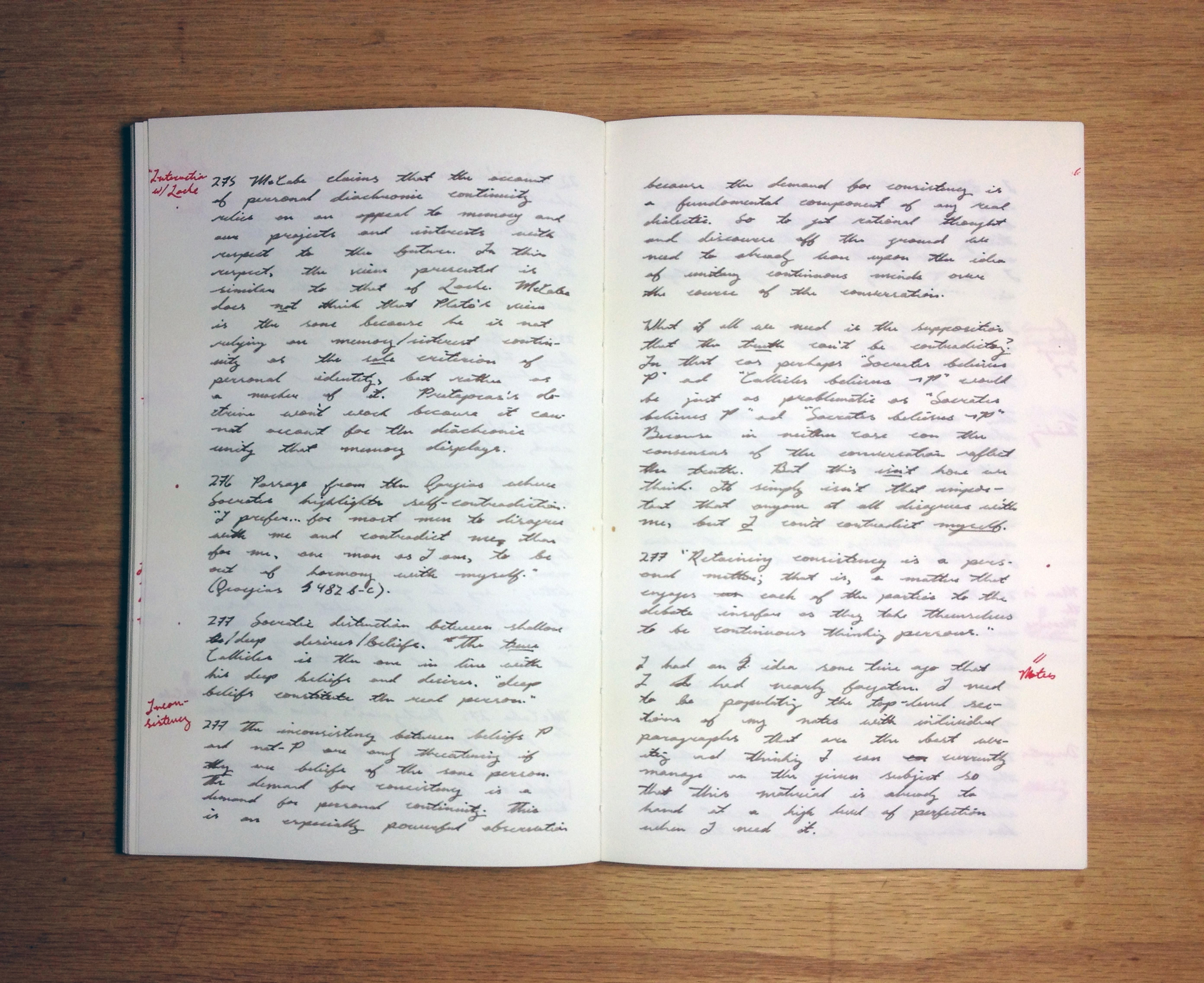Notebook Annotation
As I outlined in my last post, I split my note taking between engagement notes and memory notes—the former with a notebook and pen and the latter with a computer. A typical page in my notebook looks like this:

As you can see from this photo, I use two different colored inks to organize my notes. All my notes go into the notebook on the first available line in the darker sepia color. I then review my notes with the red. As I review I put brief words in the margins to indicate subjects covered. This way, I can simply flip through and scan the margins to find what I’m looking for. I also put brackets around very important passages and circle excellent phrases that I want to reuse. Greek letters go in the margins to indicate the kind of note: (α) original writing, (β) reading notes, (γ) lecture notes, and (δ) personal notes. Further, a double slash indicates a side comment and a check mark indicates a to-do item. This allows me to skip large portions when I’m looking for something. Say, for instance, that I’m looking for some notes taken on Plato’s Republic. I can skip all the sections right away that do not have a β in the margin. At the same time that I go over my notes with a red pen, I also enter the juiciest portions into my computer system and these earn a dot in the margin.
This review and annotation process allows me to reflect on and internalize the material that I have taken down. Years ago, I used to take down reading or lecture notes and just stuff them in a notebook somewhere, maybe reviewing them once for a test. As a result, I had many full spiral bound notebooks to throw away because I didn’t remember what was in them and didn’t grasp the overall shape of what I had learned. I started this review and summary method by stealing some ideas from the Cornell note taking method. I also gained some ideas from the spaced repetition method of flash cards and because of this I always allow at least twenty four hours between taking notes and reviewing them. Combining these I have noticed a dramatic increase in my retention and comprehension and I can easily get a top-down sense of what I learned in a day by looking at the key words in the margins.